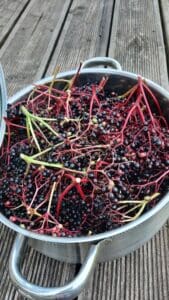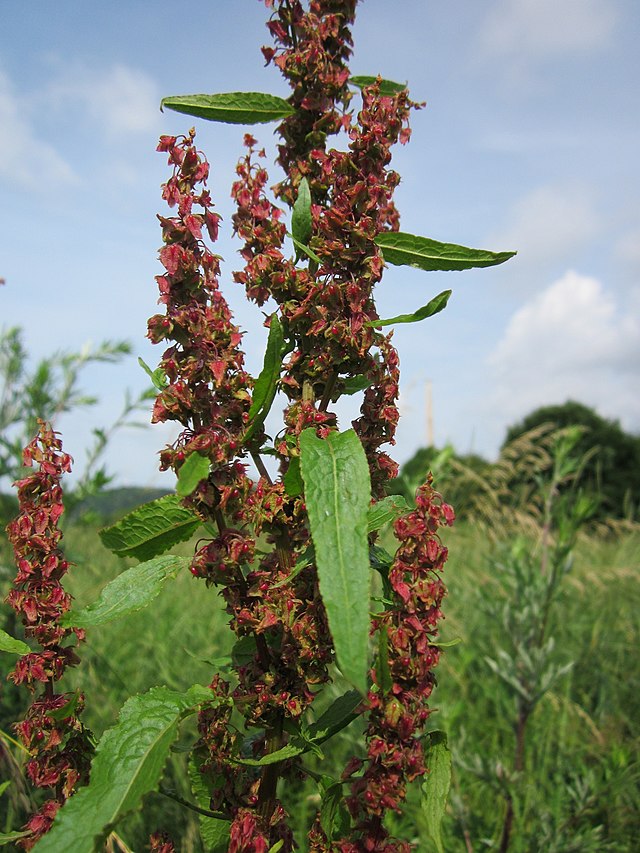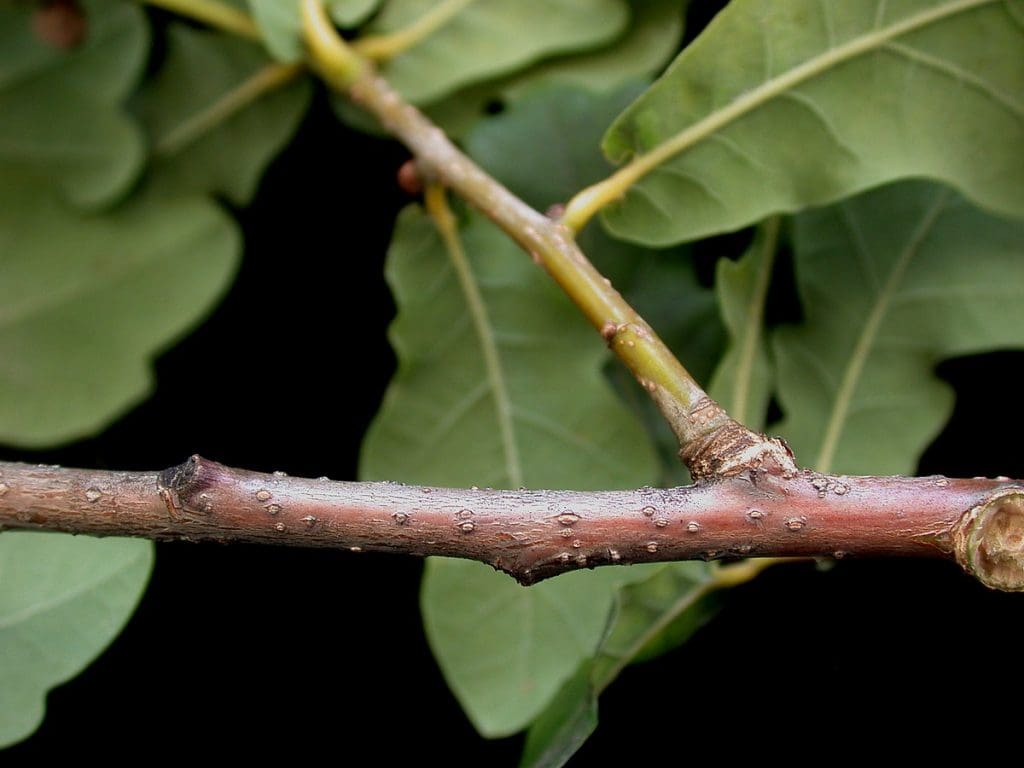It’s not only food we can forage for in our hedgerows, something I love to do is head out Foraging For Dyes.
Mother nature provides us with an abundance of plants that can be useful elsewhere than just the kitchen. In this blog post we are going to take a dive into the world of foraged, natural dyes and dying techniques.

The rise of fast fashion has highlighted the damage that synthetic dyes are having on our environment. Often deriving from petrochemicals, these dyes are polluting our soil and water. Natural dyeing has been around for thousands of years, and our ancestors would have been using flora, minerals, and insects to dye various materials. From the ancient Egyptians to the Greeks, there’s been a revival in the use of natural dyes as a more sustainable option. It’s always surprising what colours you’ll find not far from your front door….
The process of natural dyeing might seem overwhelming to start with. Please find below a brief introduction in how we prep, dye, and fix natural materials with the plant’s we can forage. (Please note this is a very simple guide, you may want to do a little more research but remember – it’s fun experimenting!)
What material to use when Foraging For Dyes?
It’s important to only dye natural material. Using synthetic just won’t work. So, before you get started ensure whatever you plan to dye is from a natural source such as wool, cotton or silk. If you wanted to take it a step further, you could also research fibres that can be foraged and processed such as nettles, dandelions and honeysuckle.
Find more out on natural fabrics suitable for dying here
Weighing & Scouring/Cleaning
Weigh your fabric before you begin dyeing – this will affect the amount of mordant and dye material needed to create a beautiful colour and end result. Scouring essentially means ensuring that your fabric is clean before we start the dyeing process.
Mordanting
Mordants fix the colour to the fabric. They help to open the fibres so it will take the dye better. It’s worth researching which mordant to use and how much depending on the fabric but you can make them from anything such as cream of tartar, soya milk, potassium aluminium sulphate and aluminium acetate. It’s also worth noting that different mordants will affect the colour and intensity of the dye – it’s definitely worth experimenting with this.
This is actually half of the fun for me, I will often extract the colour from a dye source, then pop it in separate containers or cups before adding different types of mordanted fabrics – the end results can be astonishingly different from one another.
Dye Bath, Extraction & Dyeing
Once you have chosen your plant and prepped the fabric you’ll want to create the dye bath and extract the colour .
This is simply done by simmering the plant material in a big pot on the stove for around an hour then leaving to cool naturally. Strain your dye bath and then add the fabric and bring back up to a simmer for another hour. Now rinse in lukewarm water and hang to dry. There is something truly magical about witnessing the colour evolving– enjoy!
You can also experiment with adding different modifiers that will amazingly expand certain colour palettes. These can be acidic such as the use of lemon juice or creating an iron water.
Foraging For Dyes – What Can We Use & Forage?
There’s an absolute plethera of things we could use for dying, even common grass trimmings could be used to producing a vibrant green colour, although it will fade from the fabric quite quickly without the use of mordants. However I’ll outline the easiest to find and best results when we’re Foraging For Dyes it’s important to follow safe foraging practices too.
Only take what you need
Leave enough for nature
Be careful of damaging the ground too much for other plants & species
Be aware of what’s legal in your country – here’s Fez’s blog on the relevant laws for the UK
Dock

You won’t have to travel far to find dock (Rumex spp.). Commonly found in the fields, woodlands, and hedgerows this plant will produce a thick and long tap root that can be used to produce a yellow dye. Dig up the roots (you’ll need the land owners permission), give them a good wash and then chop them up small.
They will give you a lovely vibrant Yellow.
They do have a pungent smell – so keep the window open!
Oak

Oak (Quercus spp.) has a long history of dyeing and ink making and being very rich in tannins means the colour produced can be long lasting. All parts of the oak can be used from the leaves, acorns, twigs, and branches and even those amazing oak galls that you often find.
The colours produced are varied shades of brown, from creamy right through to rich and golden.
Happy foraging!
Stinging Nettles

Nettles (Urtica dioica) aren’t only a superfood – they have such a myriad of different uses from medicine to making clothes, fertiliser, and natural dye. The Roman’s were said to have introduced nettles to the UK (though that might be due to confusion between different species) – and I am grateful. Green can be a difficult colour to produce if using natural dyes, and nettles are one of the very few plants we can forage to create beautiful shades of green.
The colour is most intense in the spring and using the nettle tips. It’s also recommended to use double the amount of plant material to achieve a more vivid shade.
Just remember to wear those gloves.
Cleavers

Also known as goose grass and sticky weed (Gallium aparine), cleavers are found in abundance in the springtime. They make a wonderful tonic to support our lymphatic system, but the roots make an amazing natural dye giving us shades of deep red. Beautiful! Collect the roots on a dry day (they are very fine and brittle so this makes it easier) and then chop up finely and dry out on a sunny window ledge or in the dehydrator. Now you’re ready to make the dye bath and it’s best to use a ratio of 2:1 (twice the amount of plant material to weight of fabric).
The colour we tend to get from these roots is an incredible pink to red depending on the PH of the liquid and mordant used.
Silver Birch

Silver birch (Betula pendula) is a beautiful tree that not only gifts us with tasty birch sap in the early spring time (recipe for birch sap syrup) but has other amazing uses from tinder and kindling, making flour and carving. It also makes a magnificent natural dye. We want to use the bark for this so make sure you’re only collecting it from freshly fallen trees. Silver birch grows in abundance, so you won’t have to look far. Peel the bark and then soak for around a week before you make your dye bath.
The colour you will yield will most likely be a gorgeous dusky pink – how lovely!
Through our guide we’ve only just touched the surface on the vast potential of Foraging For Dyes, however I hope it’s enough to be the spark on excitement and enthusiasm to help start your journey into hedgerow dyes & wild colour.
It doesn’t just stop there! The hedgerows are plentiful in other plants that we can explore and experiment with.
Hopefully you’ll be inspired to see what colours of the rainbow you can make…
Happy Foraging





